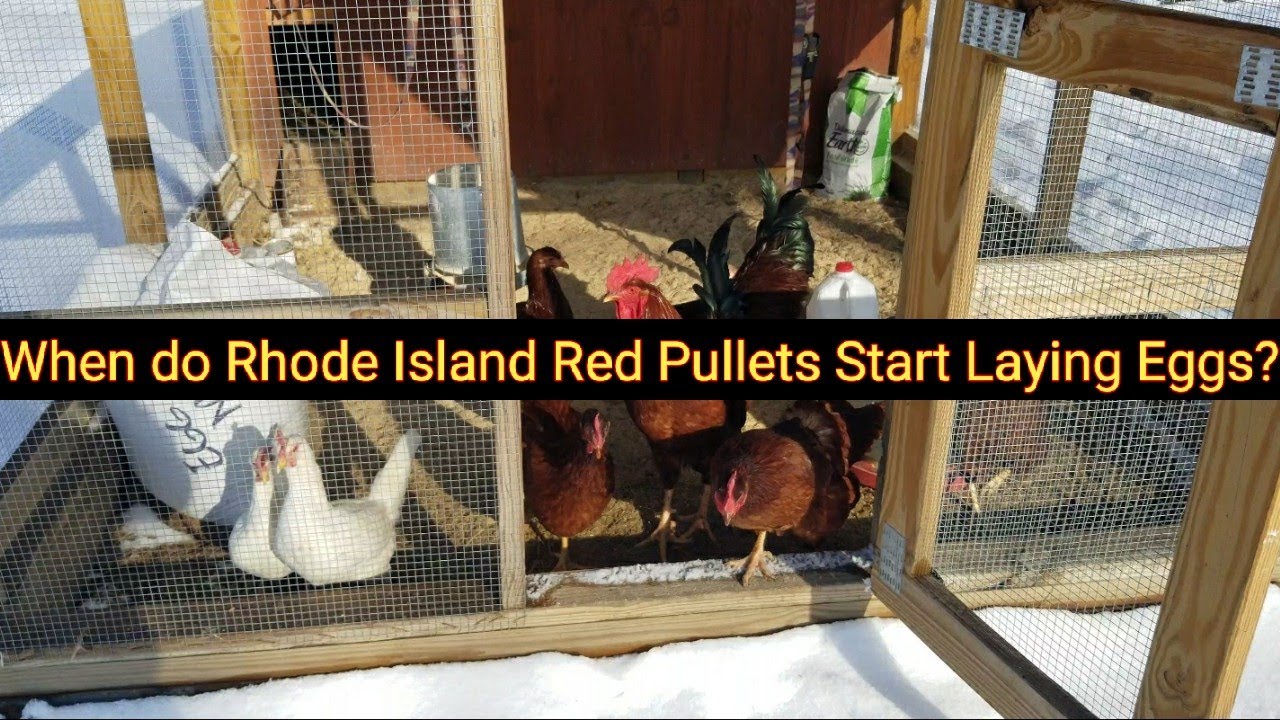Introduction to Rhode Island Red chickens
Rhode Island Red chickens are a popular breed known for their excellent egg-laying capabilities. Originating from the United States, these birds are named after the state of Rhode Island. They are medium-sized, with deep rust-colored feathers that make them easy to identify. Besides their attractive appearance, Rhode Island Reds are renowned for their friendly and docile nature, making them a favorite among backyard chicken keepers.
Rhode Island Red chickens and egg-laying
One of the primary reasons people choose Rhode Island Reds as their preferred breed is their remarkable ability to lay eggs consistently. These chickens are known for being productive layers, especially during their first year of laying. While they may not outperform specialized laying breeds, Rhode Island Reds are reliable egg producers and are known for their hardiness and resilience.
Understanding the egg-laying process in chickens
Before discussing when Rhode Island Reds start laying eggs, it is essential to understand the egg-laying process in chickens. The reproductive system of a hen starts developing at a young age, but it takes time for it to mature fully. The ovaries in young pullets are small and undeveloped, gradually growing and producing more mature eggs as they approach the point of lay.
Factors influencing when Rhode Island Reds start laying
Several factors influence when Rhode Island Reds will reach the point of lay. Genetics play a significant role, as some hens within the breed may mature earlier than others. Nutrition is also crucial, as a well-balanced diet helps promote healthy egg development. Additionally, environmental factors such as daylight length and temperature can impact when hens start laying.
Age milestones in the Rhode Island Red’s egg-laying journey
The journey from chick to laying hen is marked by several age milestones. Around 4 to 5 months of age, Rhode Island Reds will experience sexual maturity, which is when their reproductive system becomes fully functional. At this stage, their bodies will start preparing for egg production. It is important to note that reaching sexual maturity does not necessarily mean they will start laying immediately.
Signs that your Rhode Island Red is nearing egg-laying age
As Rhode Island Reds approach the point of lay, there are specific signs to watch for. Combs and wattles, which are the fleshy growths on a chicken’s head and neck, will become larger and redder. Hens may also start displaying nesting behaviors, such as scratching and exploring potential nesting spots. Another noticeable sign is squatting, where the hen crouches low to the ground when approached.
The average age at which Rhode Island Reds start laying
On average, Rhode Island Reds begin laying eggs between 5 and 6 months of age. However, this can vary from bird to bird. Some may start laying as early as 4 months, while others may take longer and not begin until 7 months. Patience is crucial during this time, as each hen will follow her own biological timeline. It is important not to rush the process or introduce stressors that could delay egg-laying.
Preparing your coop for Rhode Island Red egg production
Before your Rhode Island Reds start laying, it is essential to ensure their coop is appropriately set up for egg production. Nesting boxes should be clean, private, and lined with comfortable materials such as straw or wood shavings. Adequate ventilation and lighting should also be provided to create a comfortable environment for the hens. Regular cleaning and maintenance are essential to ensure a healthy and productive flock.
Nutrition requirements for optimal Rhode Island Red egg-laying
Proper nutrition is vital for Rhode Island Reds to reach their egg-laying potential. A balanced layer feed that contains essential nutrients such as calcium, protein, and vitamins should be provided. Calcium is particularly important for strong eggshell formation. Additionally, offering treats such as crushed oyster shells or leafy greens can supplement their diet and promote healthy egg production.
Caring for Rhode Island Reds during their pre-laying stage
During the pre-laying stage, it is important to provide the best care for your Rhode Island Reds. Regular health checks, proper vaccinations, and parasite control should be maintained. Monitor their behavior, ensure they have access to fresh water at all times, and provide a stress-free environment. Avoid excessive handling or disruptions that could cause unnecessary stress, as this may negatively impact their development.
Monitoring your Rhode Island Red’s development for signs of egg-laying
As your Rhode Island Reds approach the typical age for egg-laying, continue to monitor their development closely. Look for physical signs such as larger combs and wattles, frequent squatting behavior, and increased exploration of potential nesting areas. These signs indicate that your hens are preparing for egg-laying and are a good indication that the first eggs are on the horizon.
Troubleshooting delayed egg-laying in Rhode Island Reds
While most Rhode Island Reds will naturally start laying eggs within the expected timeframe, there may be cases of delayed egg-laying. Various factors such as stress, improper nutrition, health issues, or the onset of colder months can cause delays. If your Rhode Island Red is not laying eggs by 7 months, it is advisable to consult with a veterinarian or an experienced poultry keeper to identify and address any potential issues.





